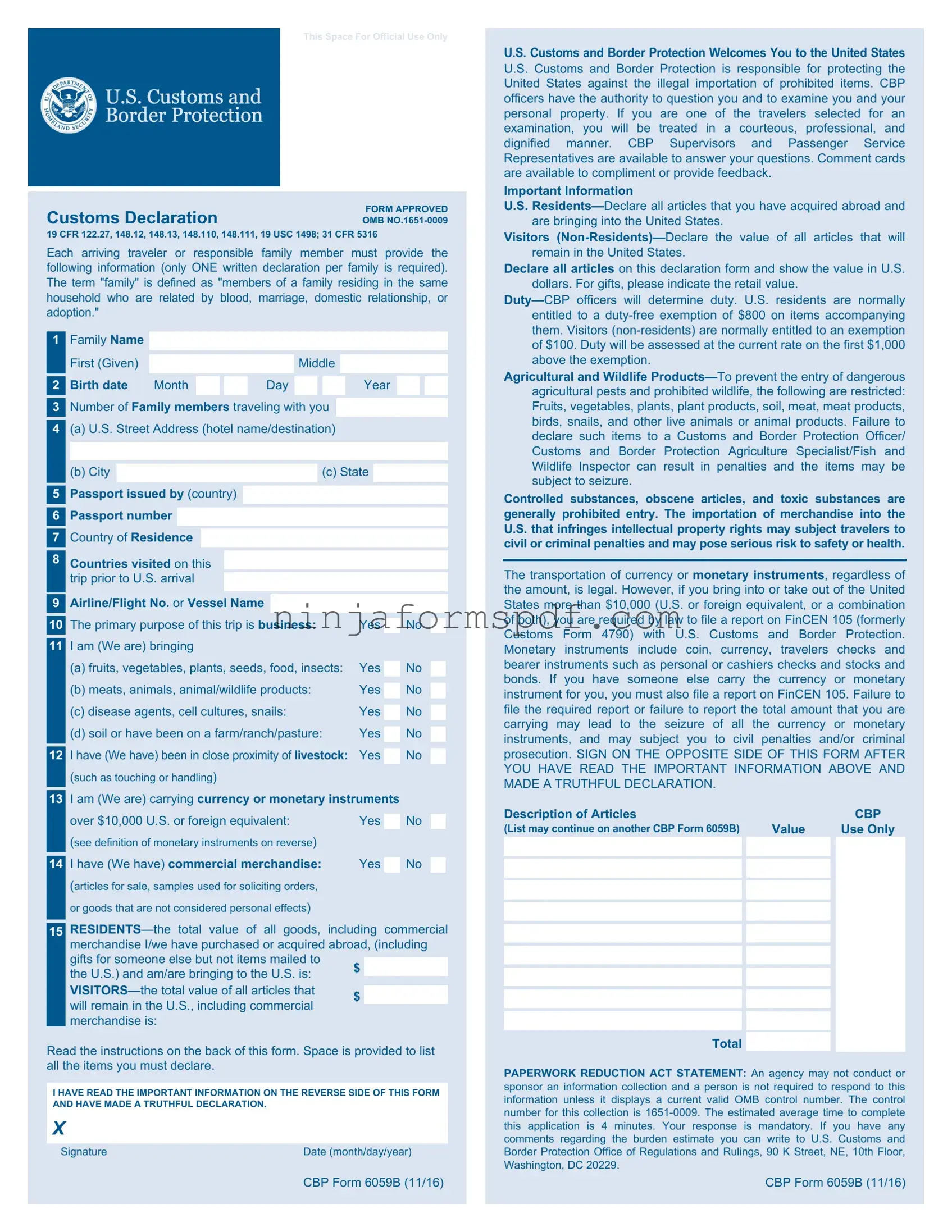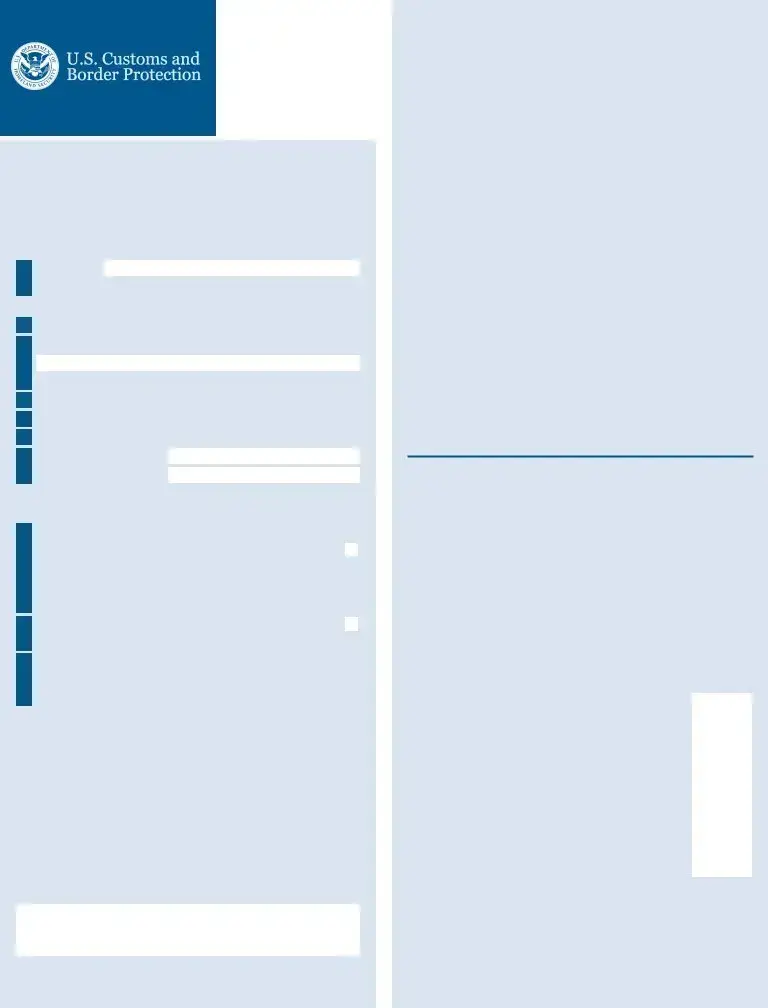What is the CBP 6059B form?
The CBP 6059B form, also known as the Customs Declaration form, is a document that travelers entering the United States must complete. It is used by the U.S. Customs and Border Protection to obtain necessary information about who is entering the country, what they are bringing with them, and any items that might be subject to duties or agricultural restrictions.
Who needs to fill out the CBP 6059B form?
Every traveler entering the United States, whether by air, sea, or land, must complete the CBP 6059B form. This requirement applies to U.S. citizens, residents, and visitors. Families traveling together can submit a single form, but each family member may be required to complete individual forms in certain situations.
Can I fill the CBP 6059B form out online?
Yes, travelers have the option to complete the CBP 6059B form electronically through the Mobile Passport Control (MPC) app or Automated Passport Control (APC) kiosks available at selected airports. These electronic options streamline the entry process but are not available at all entry points into the United States.
What information do I need to provide on the CBP 6059B form?
On the CBP 6059B form, travelers are required to provide personal information such as their name, date of birth, and passport details. Additionally, they must declare any items being brought into the United States that exceed duty-free allowances, are restricted, or are prohibited. This includes declaring cash or monetary instruments exceeding $10,000, food, plants, animals, and goods intended for commercial purposes.
How do I declare items on the CBP 6059B form?
Items should be declared by providing a brief description and the value in U.S. dollars. It is important to be honest and accurate when declaring items, as failure to do so can result in penalties, including fines or confiscation of undeclared items. If unsure about whether an item needs to be declared, it is always safer to declare it.
What happens if I make a mistake on the CBP 6059B form?
If a mistake is made on the form, it should be corrected before proceeding through customs. Travelers can request a new form from a customs officer or amend the error on the electronic version if using an electronic option. It's important to address any mistakes promptly and honestly, as discrepancies can lead to delays or further inspection.
What are the consequences of not declaring items on the CBP 6059B form?
Failure to declare items that are subject to declaration can result in significant consequences. These can include the seizure of the undeclared items, fines, and, in severe cases, criminal charges. Compliance with declaration requirements ensures a smoother entry process into the United States.
Can I keep the CBP 6059B form after entering the United States?
After processing, the customs officer may collect the completed form. If the form is collected, there is no need to keep it. However, if the form is returned, it is advisable to hold onto it until after leaving the customs area, as it may be required to present to customs officers during the entry process.
Where can I get help with completing the CBP 6059B form?
For assistance with completing the CBP 6059B form, travelers can consult the guidelines available on the U.S. Customs and Border Protection website or ask for help from customs officers at the point of entry. Assistance is also available at Automated Passport Control kiosks and through the Mobile Passport Control app's guidance features.



 (c) State
(c) State 



 No
No
